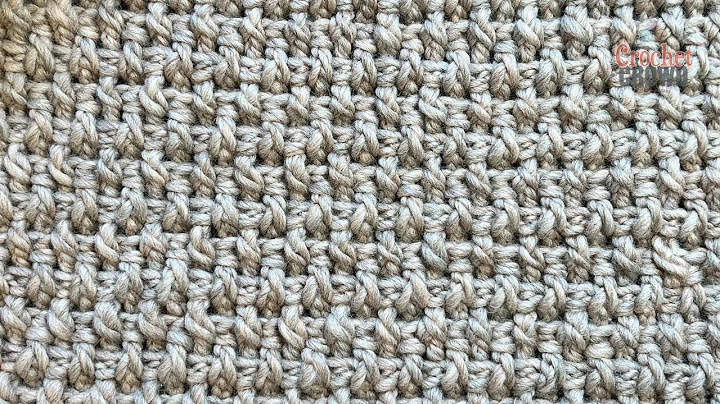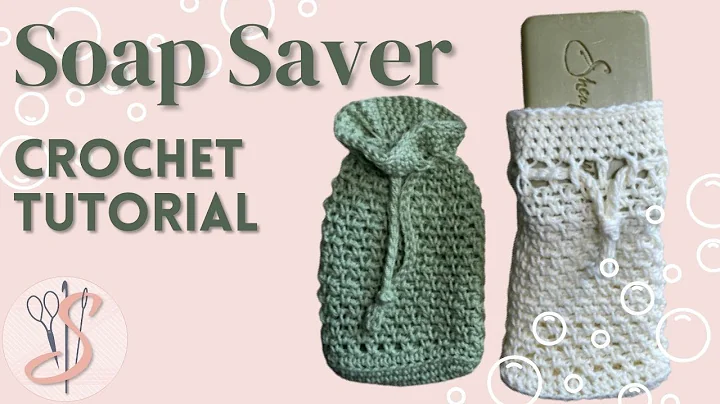Learn Gorgeous Crochet Flower Stitch on Fabric
Table of Contents:
- Introduction
- Understanding the Flower Stitch
- Materials Needed for Crocheting the Flower Stitch
- Getting Started with the Flower Stitch
- Crocheting on a Flat Piece vs. Crocheting on Fabric
- How to Crochet the Flower Stitch on a Flat Piece
- How to Crochet the Flower Stitch on Fabric
- Creating Shape and Bend with the Flower Stitch
- Troubleshooting Tips and Common Mistakes
- Conclusion
Crocheting the Flower Stitch: A Step-by-Step Guide
Crocheting is a timeless craft that allows you to create beautiful and intricate designs using just a hook and yarn. One of the most fascinating stitches in crocheting is the flower stitch. The flower stitch adds texture and dimension to any project, making it a popular choice among crocheters. In this guide, we will explore the ins and outs of crocheting the flower stitch, including various techniques and tips to help you master this intricate stitch.
1. Introduction
Before delving into the world of the flower stitch, it's essential to understand its significance and versatility. The flower stitch is a decorative motif that resembles a blooming flower. This stitch can be used in various projects, such as blankets, scarves, and even clothing items. With its intricate design, the flower stitch adds a touch of elegance and sophistication to any crochet project.
2. Understanding the Flower Stitch
The flower stitch is composed of multiple components that come together to create the final design. It typically consists of several double crochets worked in a cluster, forming the petals of the flower. Additionally, the stitch may incorporate chains and single crochets to create additional textures and spaces within the design. Understanding how each element of the flower stitch works will enable you to create intricate and visually appealing patterns.
3. Materials Needed for Crocheting the Flower Stitch
To get started with crocheting the flower stitch, you'll need a few essential materials. These include:
- Crochet hooks: Choose a hook size suitable for your yarn weight and desired tension. It's recommended to use a slightly larger hook size than recommended for your yarn to create a lacy effect with the flower stitch.
- Yarn: Select a yarn that complements the desired project and provides good stitch definition. Thicker yarns may result in bulkier flowers, while thinner yarns will create more delicate and intricate flowers.
- Scissors: A pair of sharp scissors is necessary for cutting yarn and weaving in ends.
- Tapestry needle: This needle is useful for weaving in loose ends and finishing touches.
4. Getting Started with the Flower Stitch
Before diving into the flower stitch, it's essential to have a strong foundation in basic crochet stitches. Familiarize yourself with stitches such as chains, single crochets, and double crochets. This knowledge will help you understand the structure and execution of the flower stitch.
To begin crocheting the flower stitch, create a slip knot on your crochet hook. Then, chain a multiple of eight stitches to establish the foundation row. The number of chain stitches determines the width of your project.
Next, work the first row of the flower stitch by chaining one and single crocheting in the same stitch as the chain. Continue by skipping one stitch, single crocheting in the next stitch, and creating a shell of double crochets over the next five stitches. Repeat this pattern until the end of the row, making sure to end with a single crochet.
5. Crocheting on a Flat Piece vs. Crocheting on Fabric
One aspect to consider when crocheting the flower stitch is whether you are working on a flat piece or directly on fabric. Crocheting on a flat piece allows you to practice and perfect the stitch before incorporating it into larger projects. On the other hand, crocheting directly on fabric gives you the opportunity to embellish clothing or home decor items with the unique flower stitch design.
6. How to Crochet the Flower Stitch on a Flat Piece
When crocheting the flower stitch on a flat piece, it's important to focus on creating a cohesive and visually interesting pattern. After completing the foundation row, continue working subsequent rows by chaining three at the beginning of each row for height. Then, create shells of double crochets in the chain spaces of the previous row and single crochets over the shells. Repeat this pattern until you achieve the desired length.
Remember to turn your work at the end of each row and maintain the proper stitch count to ensure accuracy and consistency. Crocheting on a flat piece allows you to experiment with different color combinations and create unique patterns that showcase the beauty of the flower stitch.
7. How to Crochet the Flower Stitch on Fabric
If you prefer to crochet the flower stitch directly on fabric, the process can be slightly different. Before starting, ensure that your fabric is suitable for crocheting by testing the stitch on a sample piece. If the fabric doesn't hold the stitch well, consider reinforcing it with interfacing or a stabilizer to prevent stretching and distortion.
When crocheting on fabric, use a smaller crochet hook than you would for crocheting on a flat piece. This will help create tighter stitches and ensure that the fabric holds the flower stitch securely.
To begin, mark the spots where you want the flowers to be placed on the fabric. Use a fabric marking tool that can easily be removed or washed away after crocheting. Create a slip knot on your crochet hook and insert it into the fabric at the desired spot. Work the flower stitch as usual, incorporating the fabric into the stitches by inserting the hook through the marked fabric spots.
8. Creating Shape and Bend with the Flower Stitch
The flower stitch offers versatility in creating shape and bend within your crochet projects. By altering the placement of the flower stitch and incorporating additional stitches, you can manipulate the fabric to create curves, angles, and even three-dimensional effects.
For example, to create a curved shape, start your flower stitch closer to the edge of the fabric and gradually move it further away. This gradual increase or decrease in stitch placement will result in a curved design. Experiment with different stitch placements and combinations to achieve the desired shape and bend in your projects.
9. Troubleshooting Tips and Common Mistakes
As with any crochet stitch, the flower stitch may present some challenges along the way. To help you overcome these hurdles, here are some troubleshooting tips and common mistakes to avoid:
- Keep an eye on your stitch count: Ensure that you have the correct number of stitches in each row to maintain the integrity of the flower stitch pattern. Missing or adding stitches can result in a distorted design.
- Maintain consistent tension: Consistent tension is crucial for achieving uniform stitches. Avoid pulling the yarn too tightly or too loosely, as this can lead to uneven or misshapen flowers.
- Weave in ends securely: When changing colors or starting a new yarn ball, be sure to weave in the loose ends securely to prevent unraveling or unsightly bumps in your project.
10. Conclusion
The flower stitch is a beautiful and versatile crochet technique that adds charm and elegance to any project. With a solid understanding of the stitch's components and techniques, you can unleash your creativity and incorporate the flower stitch into a wide range of crocheted items.
From blankets and scarves to clothing and home decor, the flower stitch offers endless possibilities for adding texture and visual interest. Whether you're a beginner or an experienced crocheter, mastering the flower stitch will undoubtedly enhance your crochet repertoire and allow you to create stunning and unique pieces with ease. So grab your crochet hook, choose your favorite yarn, and embark on an exciting journey of crocheting the flower stitch!
 WHY YOU SHOULD CHOOSE BEAUTYBADY
WHY YOU SHOULD CHOOSE BEAUTYBADY







